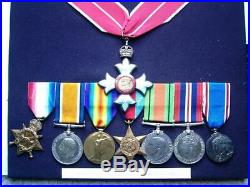
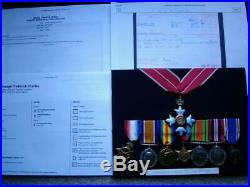
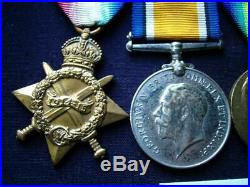
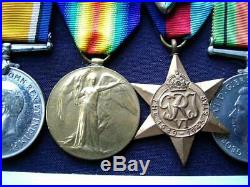
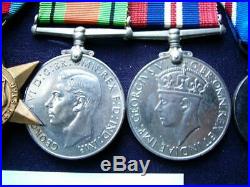
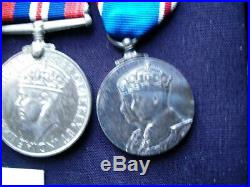
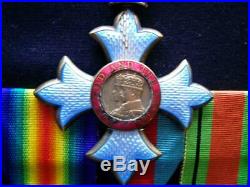
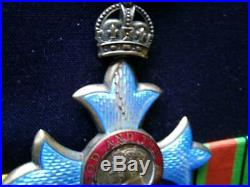
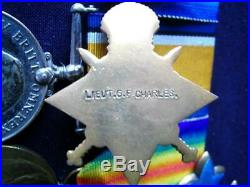

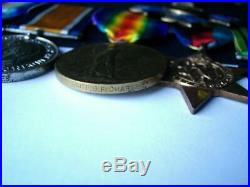
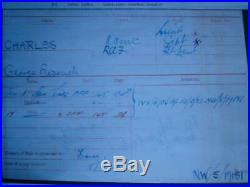
Excellent condition, scarce WW2 & WW1 C. Group awarded to Brigadier George Frederick Charles Assistant Director Dental Services Late Army, ANZACS & Royal Air Force Dental Corps, C. Neck badge, 1914-15 Star (Lt G F Charles), British war & Victory medal (Capt G F Charles), 1939-45 Star, British war & Defence medal 1939-45, coronation medal 1937, some history and copy medal rolls, awards all verified, CBE and WW2 medals unnamed as issued, interesting story for further research, excellent condition, some slight enamel chipping to upper arm of C. E, see pictures for condition. Scarce Brigadier George F Charles CBE WW1 WW2 medals RAMC Dentist & ANZACS & RAF. Very scarce WW1 & 2 Military C. E medal group Brigadier Dental Corps RAMC. London Gazette 14 June 1945. The Original Recommendation states: Colonel Charles has administered the Army Dental Services in Scottish Command for over three years. To his organising ability and wide experience, coupled with energy and enthusiasm, are due the excellent dental arrangements in the Command. During the mobilisation and special training of the large forces for overseas many dental problems arose and were successfully overcome under his supervision. In short, the high standard of dental fitness of all troops in and leaving the Command is undoubtedly due to his zeal and efficiency – attributes which have inspired all his officers and men in their work in the common cause. George Frederick Charles was born in 24th February 1891, Heywood, Lancashire and joined the Army Dental Corps (arm of RAMC) as Temporary Lieutenant in September 1915. He married Dorothy Bailey December 1916, in Builth, Breconshire, mid Wales. He served as a Dental Officer during the Great War on the Western Front , France from 8 October 1915, later serving in the ANZACS 11th Battalion Australian Infantry from 11 July 1918. THE HUNDRED DAYS OFFENSIVE-ANZACS 11TH Battalion-all out war. British Troops advance Around this time, a small group of US soldiers was attached to the 11th Battalion to gain experience. The following month, the battalion captured Gerbedoen Farm before supporting the 10th Battalion’s successful attack on Merris. On 8 August, the Allies launched their own offensive, known as the Hundred Days Offensive, around Amiens. The 11th Battalion did not take part in the opening phase of the offensive, moving to Hamel and establishing themselves in a defensive position around Harbonnieres. On 10 August, the battalion was committed to a strong attack around Lihons; although successful, the attack lasted three days and resulted in heavy casualties, including 58 killed and 140 wounded. On the night of 12/13 August, the 11th was withdrawn to the support line just behind the front. WW1 British Tank Later, they were moved to Vaire and then Cerisy, before supporting the 9th and 12th Battalions around Chuignolles and Proyart on 23 August and then around Chuignes and Cappy two days later, where further losses were experienced. The 11th Battalion’s final attack came against the Hindenburg Outpost Line on 18 September when they launched a three-company attack around Fervaque Farm and Carpeza Copse near Villeret. Despite being severely understrength each company had an average strength of just 76 men they advanced over 3,000 yards (2,700 m) and took over 120 prisoners and large quantities of German equipment, for the loss of 18 men killed. WW1 German and Allied Fighters in dog fight over western front Further casualties came on 24 October when German aircraft attacked the battalion headquarters, killing a number of officers, including Darnell, who was the acting commanding officer. The heavy casualties that the Australians had suffered during the final year of the war, and the decrease in volunteers arriving from Australia, meant that the battalion was desperately understrength. Germans Surrender In October, they were withdrawn from the line for rest and reorganisation, at the insistence of the Australian prime minister, Billy Hughes. At this time, the battalion was reorganised into a two-company structure. In early November, the battalion prepared to return to the front around St. Quentin, but before they could return to the fighting, an armistice came into effect, bringing the war to an end Captain Charles just after end of WW1 transferred to the Royal Air Force Dental Service in 1919. He reverted back to the Army Dental Corps two years later, with whom he held various appointments between the wars. Advanced Colonel on 1 July 1939, he embarked for France as Deputy Director Dental Services with Medical HQ and Staff of the British Expeditionary Force on 10 September 1939. German Panzers advance – ” Blitzkreig”, Summer 1940, France He formed two additional Dental units at Boulogne and Dieppe but these were rapidly overrun by the German attack in the summer of 1940. He retired on 16 August 1946, died in the village of “Battle”, Sussex 1957 aged 66. Auctiva gets you noticed! Track Page Views With. Auctiva’s FREE Counter. The item “Scarce Brigadier George F Charles CBE WW1 WW2 medals RAMC Dentist & ANZACS & RAF” is in sale since Sunday, December 22, 2019. This item is in the category “Collectables\Militaria\World War I (1914-1918)\Other World War I Militaria”. The seller is “theonlineauctionsale” and is located in Leamington Spa. This item can be shipped worldwide.
- Country/Region of Manufacture: United Kingdom
- Country/ Organization: Great Britain
- Issued/ Not-Issued: Issued
- Type: Medals & Ribbons
- Conflict: WW I (1914-18) & WW 2 (1939-45)
- Service: Army
- Era: 1914-1945